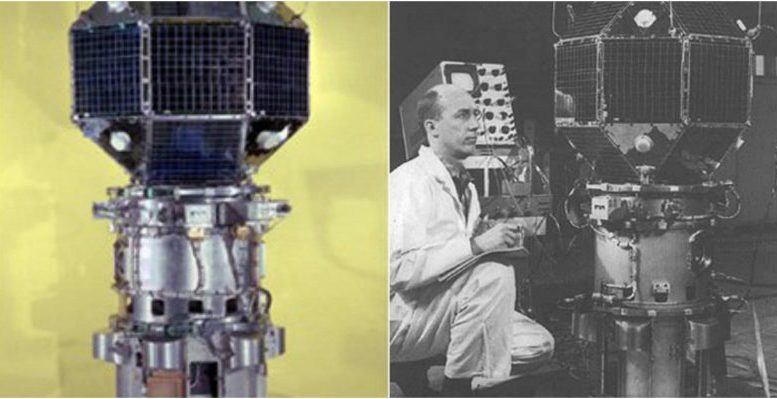Most telecommunications satellites today have a usable life of 10-15 years. The usable life of a satellite depends not only on factors like it not burning out, not having hardware failure, not being hit by a meteor, et cetera, but also on the amount of fuel onboard.
Let’s back up a little bit. Satellites work off solar energy for their delicate electronics, they also carry fuel onboard. Satellites drift over time and when a satellite moves too much from its assigned location, a command is sent from the control center on Earth to move it back. When that fuel is almost out, a different command is sent to move it to a higher orbit where it will no longer be useful. It joins 60 years of space junk just sitting up there, hopefully not prone to causing the kind of chaos we saw in the movie Gravity.
So an old satellite could actually continue to fundamentally function, it just wouldn’t be useful for communications. And it could function for a long time. That’s the lesson from this article I found over at Vintage News. It seems last October, a ground-based team began to detect signals from a satellite launched in 1967. That satellite was put up by MIT as part of a whole group designed to study satellite communication. It never deployed, possibly due to issues in the launch protocol, but it was still judged a success because back in those early days the point was simply to gather data on how any of this stuff was actually done.
The satellite was designed to send a very simple signal in the low UHF band to a ground crew. While it failed to do that initially, about four years ago an amateur started detecting the signal. It only happened every four seconds, possibly due to the satellite tumbling end over end so that its solar panels were not always in range of the sun. It’s possible (fairly likely actually) that the batteries in the satellite have long since degraded, so the satellite itself could only work when it was receiving power, much like an old laptop that only works when it’s plugged in.
Now that this satellite, called LES1, has been found, there is some question about what to do with it. It’s in a fairly low orbit, about 2800km according to the article. That could place it in the way of other satellite launches in the future. That’s unlikely, but possible. Right now there are no plans to retrieve or destroy the satellite, because at that low position it will eventually simply burn up in the earth’s atmosphere. However, with no control, there’s no saying when that would happen or whether all the pieces would safely fall into the ocean or into uninhabited areas.
This story is amazing because it shows that the stuff we make and put in the sky doesn’t really go away. It’s not likely we’ll see a dangerous band of space junk like we saw portrayed in the movie Wall-E some years ago, but certainly we have to constantly evaluate what we are doing to keep our skies clean and safe. Fifty years from now, AT&T’s school-bus sized satellites will be sitting in a parking orbit and who knows what kind of damage they could do to future spacecraft, especially if we lose communication with them. In space, a particle of dust traveling tens of thousands of miles per hour can be as dangerous as a missile… imagine something hurtling at you the size of T15 or any of the current AT&T satellites. All of a sudden that sounds pretty dangerous, right?
For over 50 years we’ve been designing communications satellites that could last for hundreds or thousands of years in space, and we don’t really talk about how to safely dispose of them. It’s a real concern, obviously, but not one we have even the slightest idea how to solve. Hopefully we’ll figure something out before the problem of “space junk” becomes more worrisome.



